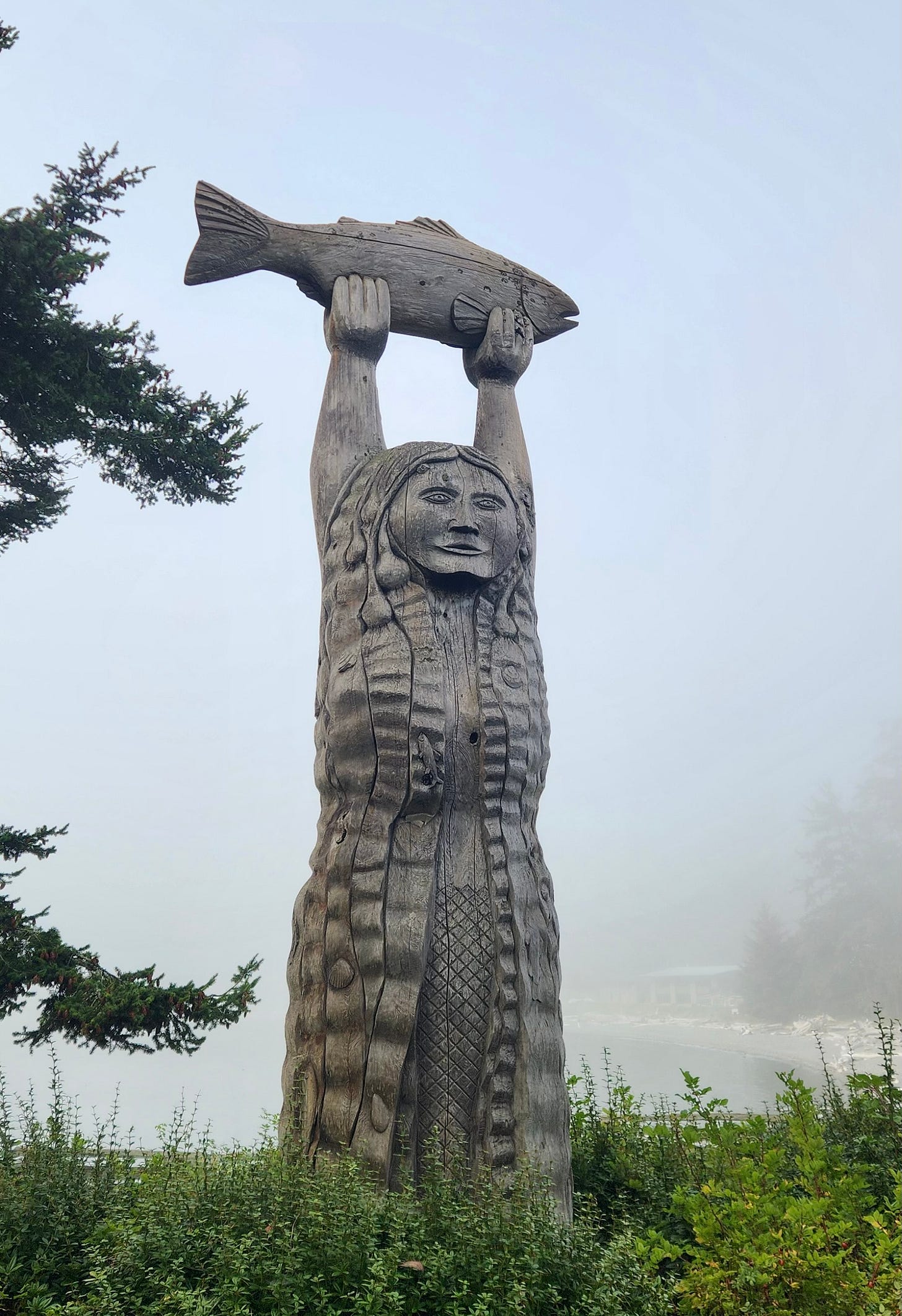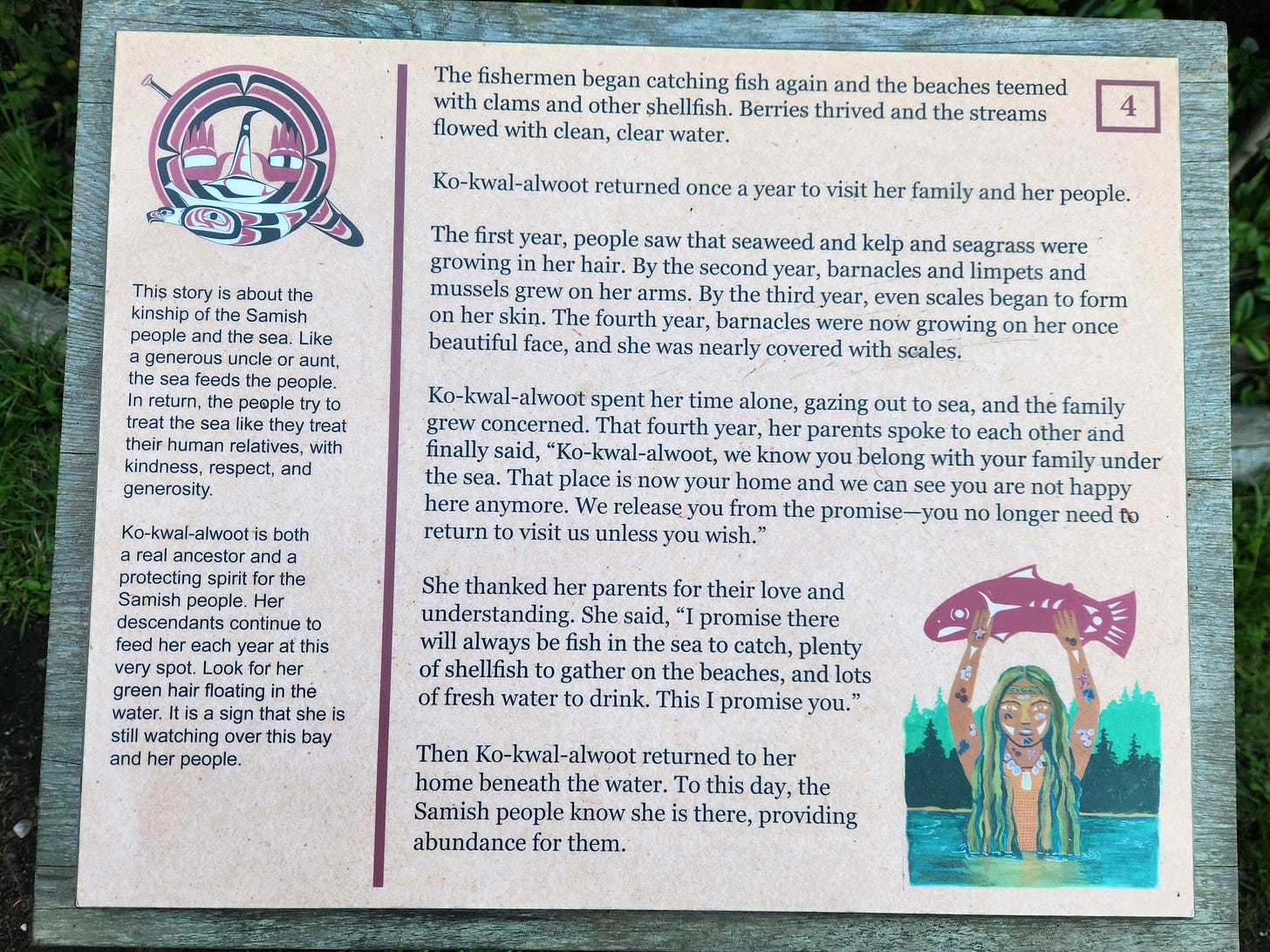September in the Pacific Northwest is a spell, a fairy-tale, a dream. Many years ago, I fell in love with this region of the world on a fall trip to Portland to attend a wedding. The air was crisp but the roses were still blooming, the sky impossibly blue over the snow-capped solidity of Mount Hood. I moved to Portland after that trip, magnetically drawn by the perfection of a weekend. Years later, I know: the PNW is as rooted in disappointing modern reality as anywhere else in this world, rife with meth addiction, city living complicated by racist housing codes and unattainable rent prices, and the long dull misery of misty rain-soaked winters. But friends, let me tell you: I forgot all this the instant we took in our first breath of salt-sea air mixed with the fragrance of sun-dry cedar mulch. I had the exact same intoxicating feeling as the one first cast upon me in the Rose City: this land is the merry-making conclusion to a divine comedy, and nothing but celebration will do here. For a literal stretch of weeks, this feeling held constant, the entire landscape echoing back beauty, warmth and invite. A sampling of iconic elements: the 4 o'clock cast of light that drips like honey from the dusty-warm boughs of the Douglas firs; otters rolling through kelp beds in morning mist; the taste of blackberries plucked warm off the vine; the smoothness of a silvery bench of driftwood thrown up on the beach as though put there to provide you with the perfect sunset viewing spot. The waves lull you, the trees whisper to you: forget all your human folly, just love this beautiful land.
Leaving behind the grandeur of the North Cascades, we spent two weeks hugging the coastline. The main feature of this area is the sea, and water in general: waves, fog, mist, rain, the damp moss and loam of the understory, the gallons of water everyday being taken up by so many massive trees and the wrack of driftwood flung ashore that speaks of the ocean’s encroachment. Our path snaked from Anacortes south down Whidbey Island, across the sound to the Olympic Peninsula and out to Lake Ozette and farthest Neah Bay, then back to Port Townsend and Seattle. Along the way, we rode multiple ferries, camped within earshot of the surf and under cedars and pines, had days of fog and rain damp enough to cause problems with Blazer’s spark coil(!) and visited several dear and hospitable friends. Given a couple more weeks of perfect conditions and maybe an enticing offer of some sort of irresistibly affordable housing deal, like Ko-kwal-alwoot after her migration to the sea, I might not have been able to voluntarily leave.


Another creature evidently enchanted by the charm of the Pacific Northwest: this Red-footed Booby (Sula sula) who has been hanging at the Port Townsend Marine Science Center since late July!
We were already Port Townsend-bound in order to visit friends, but this rare bird became a surprise highlight of our visit. It’s only the third record of this species in Washington state, and the previous examples were found dead on the shore, so it’s caused quite a stir in birding circles around Puget Sound. We spent a lovely afternoon at the dock watching the booby preen and chatting with a fellow interested avian-lover. If you are curious for more on this sighting, I encourage you to read this article in the Rainshadow Journal, which shares a thoroughly researched account of this individual bird’s probable origins and potential reasons for straying to Washington. One question that remains to be seen: will the booby fly south before winter?
Which brings us to one of the general questions we have as we turn the corner of the seasons: what evidence will we see of migration patterns? Traveling through zones of the country we are less familiar with, we’re not sure what to expect. We’ve been delighted to see the occasional warbler here and there, and are expecting large flocks of geese and waterfowl as we head across the central and Mississippi flyways. But at the coast in mid-September, the rhythms remained cryptic. We had some success spotting certain pelagic birds, including many darling Pigeon Guillemots (Cepphus columba) molting into winter plumage. But when will things fly? Where will they go? What will pass through? We’re unsure.
This set of extant questions made our morning at Cape Flattery all the more thrilling. Cape Flattery is the farthest northwest point in the lower 48, a rocky promontory jutting out into the Pacific south of Vancouver Island. It’s part of the Makah Reservation, designated tribal land that is soaked in sea fog and history. On the morning we made our visit, we hiked out to a clear view of Tatoosh Island that slowly became obscured by a curtain of gray mist. Just as we were starting to think about wrapping up the scope and heading back up the trail, four large, long-necked birds appeared in the sky above the faint outline of the now-obscured island. Initially, they looked like geese or cormorants, but as they drew closer we could see them with perfect clarity: Sandhill Cranes (Grus canadensis)! Back from the breeding grounds of Alaska, they appeared out of the mist over the Pacific and flew silently overhead toward the firm ground of the peninsula. Migration commences! Welcome back!
You might think the magic of our Pacific Northwest trip would diminish slightly as we entered the densely populated environs of Seattle. I certainly expected it to. And it might have, had our host not been supplied and ready to give us the most amazing urban wetland tour ever! Here’s me canoeing under a highway:
Sleeping on a house boat, paddling through an urban marsh, biking to the locks and the salmon fish ladder, stopping for beachside soft serve on a whim because the giant inflatable hotdog beckoning was too irresistible… even Seattle presented the Pacific Northwest at it’s seductive best.
Driving east from Seattle on October 1, we crossed the pass near Snoqualmie incredibly quickly and already the landscape spread to a dry expanse of wheat-blond cheatgrass. My heart ached a bit for the kelp, the ferns, all our pelagic seabird friends… Weeks later, writing this from Sioux Falls, SD, I can say that the unassuming beauty of the prairie grasslands has been like a balm after the assault of gorgeousness we saw daily in the grand mountainous west. But more on that in a later post; for now, let’s dream on, let’s dwell in the magic of the PNW in early autumn splendor.

















Well, now I have to tell Justin that we're moving back to the San Juans.